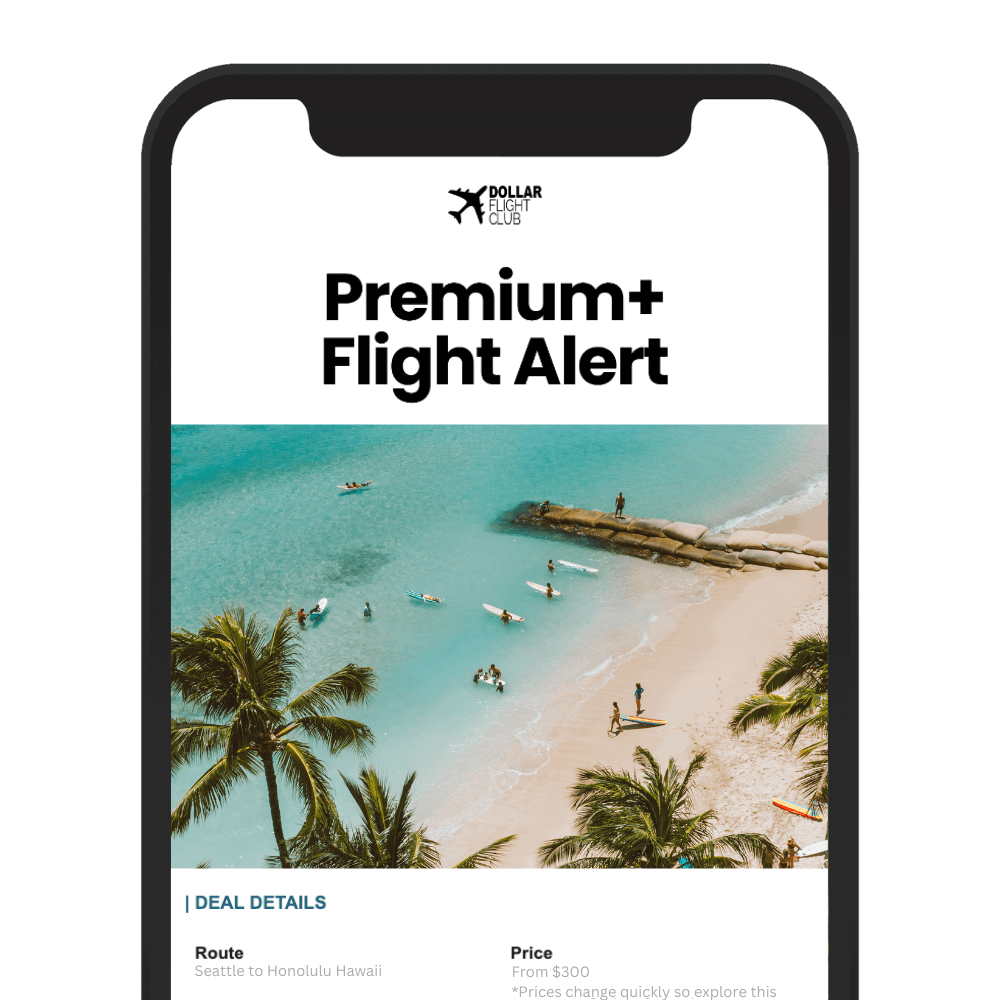Booking flights at the right time can save you hundreds of dollars. Here’s what you need to know:
- Domestic Flights: Book 45-60 days before departure for up to 25% savings.
- International Flights: Plan 2-8 months ahead, with the best deals 3-5 months before travel.
- Cheapest Days to Book: Sundays often offer the lowest fares.
- Best Days to Fly: Tuesdays, Wednesdays, and Thursdays are typically cheaper.
- Peak Travel Seasons: Prices spike mid-June to mid-August and during the holidays. For better deals, travel during quieter months like January or September.
- Tools to Save: Use fare trackers like Google Flights or Hopper, and set up alerts to catch deals and mistake fares.
For a month-by-month breakdown of the best booking times and strategies, keep reading.
General Tips for Booking Flights
Knowing when and how to book can make a huge difference in airfare costs. Timing and the right tools are key.
Best Times to Book Domestic and International Flights
For domestic flights, aim to book 45-60 days before departure to save up to 25%. For international travel, plan further ahead – 2 to 8 months in advance is ideal, with the best deals typically found 3-5 months before your trip.
Best Days to Book Flights
Sundays are often the cheapest day to book, offering savings of 6% on domestic flights and 17% on international ones. When it comes to traveling, Saturdays generally have the lowest fares, with tickets costing about 17% less than Sunday flights.
Using Fare Comparison Tools and Alerts
Platforms like Google Flights, Hopper, and Skyscanner let you track prices and get alerts for fare drops. Services like Dollar Flight Club send email and SMS notifications about discounted flights, including deals up to 90% off and rare mistake fares.
“Your best strategy is just to be patient and wait for those $1,000 flights to drop down to $400. More often than not, they will, so long as you’re looking far enough in advance”.
Setting up multiple alerts across different platforms increases your chances of spotting a great deal. Combine these tools with strategic booking timelines to maximize savings.
Now, let’s dive into the best times to book flights throughout the year.

Month-by-Month Booking Guide
Knowing when to book flights can make a big difference in your travel budget. Here’s a month-by-month breakdown of the best times to snag deals, based on data and expert advice.
Winter: December to February
Winter travel, especially during the holidays, gets pricey fast. To save, book your flights 36-72 days in advance – ideally before November 19. January is a great time for budget travelers, with average savings of $125 compared to November. Airlines often run post-holiday sales in early January to fill seats during this slower period. If you’re planning a winter getaway, consider warm-weather destinations, as they tend to be the most popular.
Once winter winds down, spring offers a fresh chance to plan both affordable trips and early summer bookings.
Spring: March to May
Spring marks the transition to peak travel season. Early March is your last chance to find deals before the spring break rush begins. For international trips, this is the perfect time to lock in summer flights – aim to book 4-10 months in advance.
Summer: June to August
Summer is a busy travel season, so timing is crucial. Start tracking prices 3-4 months ahead and aim to book 1-2 months before your trip for the best rates. Here’s a quick look at some key destinations:
| Destination | Best Booking Time | Average Roundtrip Price |
|---|---|---|
| Europe | 6-9 months ahead | $513 |
| Hawaii | 3-6 months ahead | $377 |
As the summer crowds fade, fall brings opportunities for quieter and more affordable travel.
Fall: September to November
Fall is a great time to plan for Thanksgiving travel. The best time to book is 26-59 days before your trip, with the sweet spot around 52 days out. September and October, part of the shoulder season, often feature lower prices and fewer travelers. Flying mid-week – especially on Wednesdays – can save you an average of $102 compared to Sundays.

Special Booking Considerations
Here’s how to handle specific booking scenarios while keeping costs low.
Booking for Major Events and Festivals
Big events, like the 2026 World Cup in Canada, Mexico, and the U.S., can drive up flight prices. Collaborating with travel advisors can help you secure event tickets and create a personalized travel plan.
“A travel advisor has access to suppliers that specialize in getting tickets and planning an entire trip for you”, says Robert Huie, Travel Advisor.
To save money, book your flights at least 70 days in advance. Flying on weekdays instead of weekends could cut costs by up to 40%. Set up alerts for destinations tied to major events to catch promotional fares as soon as they’re announced.
Flash Sales and Mistake Fares
Mistake fares can offer huge savings. Check out these recent deals:
| Mistake Fare Example | Normal Price | Deal Price | Savings |
|---|---|---|---|
| Delta Premium Select to Madrid | $2,000 | $602 | 70% |
| Hong Kong Airlines Business Class to Bangkok | $6,000 | $560 | 91% |
| Flights to Santiago de Chile | $1,000 | $63 | 94% |
If you spot a mistake fare, book it immediately but wait until your ticket is issued before finalizing any other plans. Keep in mind that airlines aren’t obligated to honor these fares, except for U.S. flights, which allow 24-hour cancellations.
Using Frequent Flyer Programs
Wondering whether to use points or pay cash? Use this formula: Cost of flight in cash / cost in miles = cents per mile (CPM). Aim for at least 1 CPM to ensure good value for your points.
Maximize your frequent flyer miles by:
- Saving them for pricey international flights instead of short domestic trips.
- Prioritizing programs with transferable points for added flexibility.
- Keeping track of expiration dates to avoid losing unused miles.
Frequent flyer programs can be especially useful for cutting costs during peak travel times or major events. For added convenience, consider tools like Dollar Flight Club’s Premium+ plan ($99/year), which sends SMS alerts for mistake fares and exclusive discounts on economy and business class flights.
Now, let’s look at the tools and resources that can help you lock in the best travel deals.

Tools and Resources for Flight Booking
Booking flights at the best price requires a mix of smart tools and strategies. Below are some of the best resources to help you save on airfare.
Fare Tracking Apps and Websites
Fare tracking tools make it easier to spot flight deals. Google Flights is a popular choice, offering price prediction features and historical data to help you decide the best time to book.
Dollar Flight Club is another option, providing mistake fare alerts and SMS notifications for discounted economy and business class tickets through its premium plans.
These tools can help you find deals, but pairing them with airlines that offer flexible booking policies ensures you can make changes without added costs.
Airlines with Flexible Policies
Airlines like Southwest and Delta have introduced flexible booking options, allowing free changes or same-day standby. JetBlue also offers no-fee changes on most fare classes, except for their Blue Basic tickets.
For international travel, carriers such as United Airlines and Air Canada provide various rebooking options, making it easier to adjust plans without steep penalties.
Finding Hidden Flight Deals
Beyond fare trackers and flexible policies, there are additional strategies to uncover savings. A 2023 survey by Skyscanner revealed that 62% of travelers use fare comparison tools to find hidden deals.
Using a VPN to compare regional prices and exploring multi-city routes can also lower costs. This method is especially effective for long-haul international trips, where stopovers might actually reduce the total fare.
For the best results, combine these methods with strategic timing. Set up price alerts on multiple platforms to snag deals as soon as they appear.
Conclusion
Key Takeaways
For domestic flights, booking 38 days in advance tends to offer the best prices, while international flights are generally cheapest around 50 days ahead. If you’re traveling from the U.S. to Europe, aim to book 94 days before departure for the best deals. Keep in mind that peak travel times, such as mid-June through mid-August and the Christmas season, usually come with higher fares. Using tools like Google Flights can help you find better prices, especially during off-peak times.
To improve your travel experience, consider booking flights scheduled to depart before 3 p.m., as flights later in the day are more likely to be canceled.
Tips for Saving Money
Traveling mid-week can save you up to 13% compared to weekend flights. Here are a few tips to stretch your travel budget:
- Use price alerts to track and monitor flight costs.
- Book domestic flights between 21 and 52 days before departure.
- Explore alternate airports or nearby destinations for potential savings.










